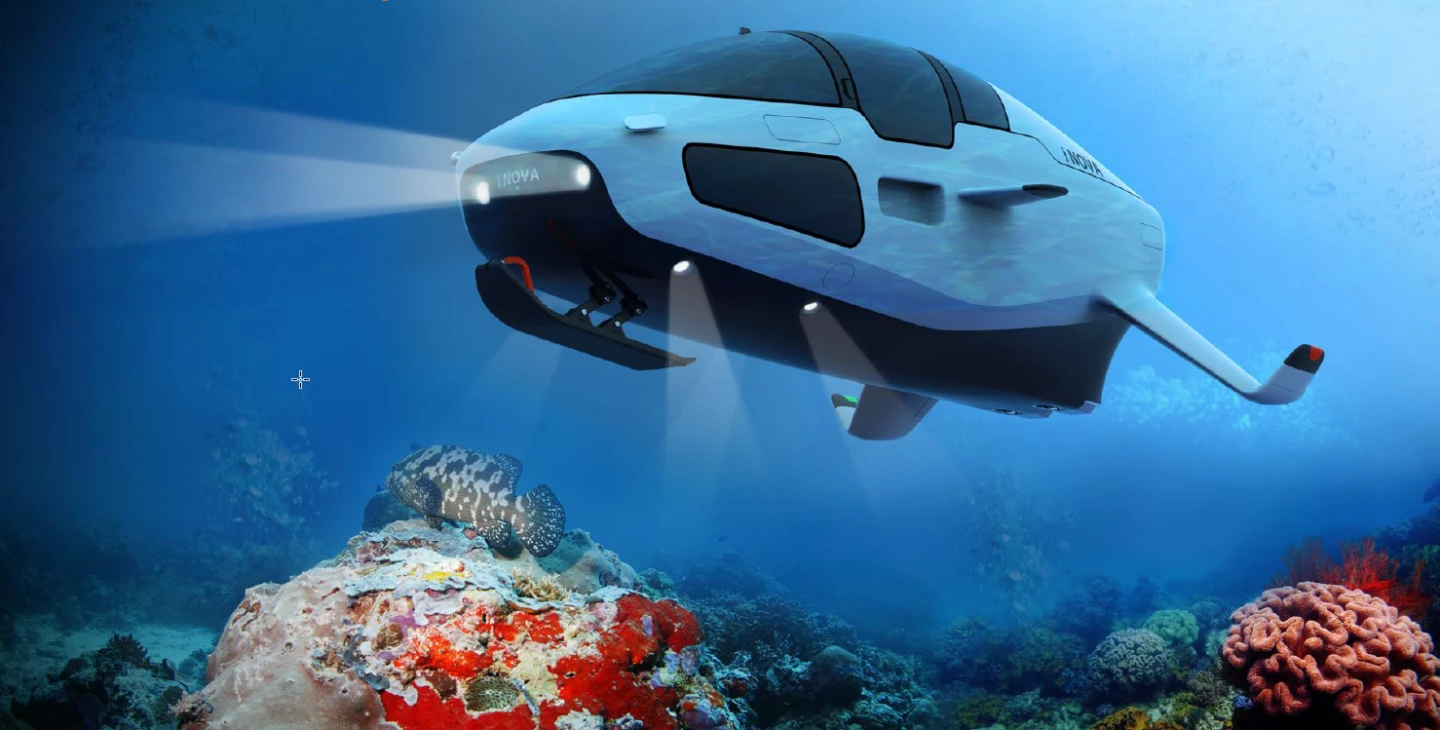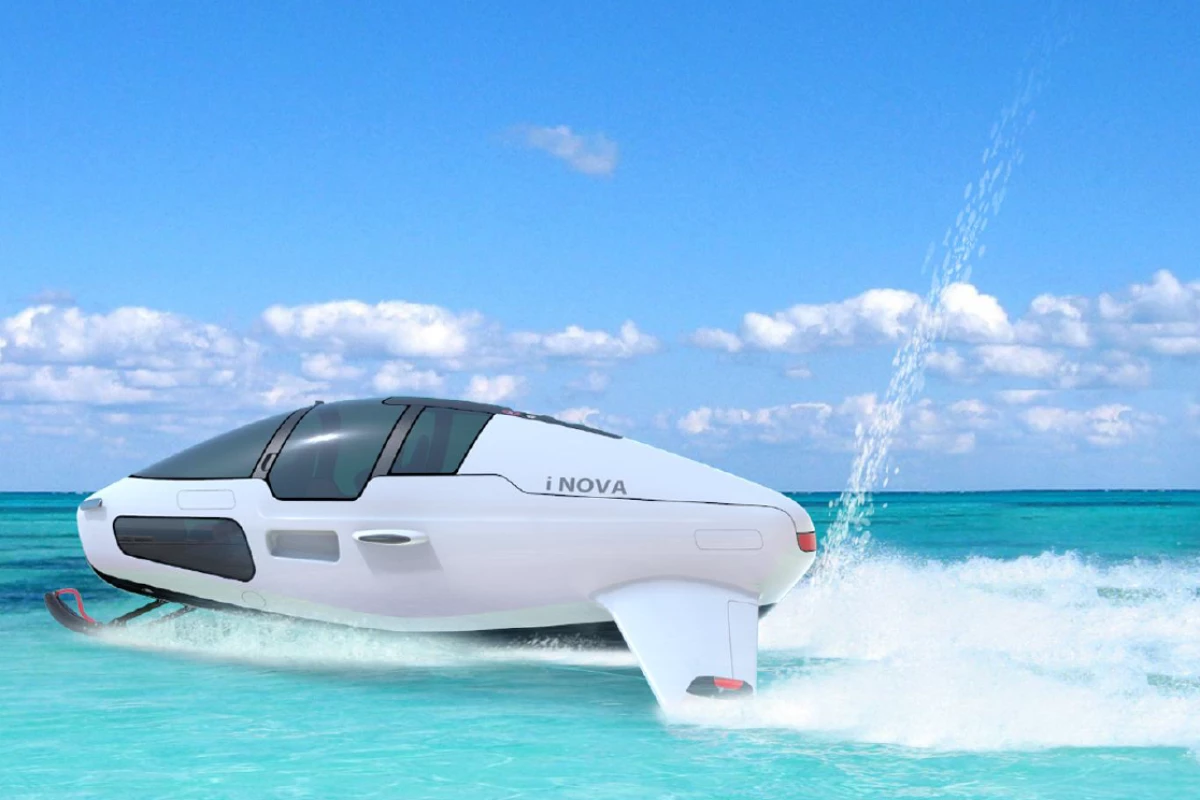Italian startup iSpace2o has announced it's starting production on the first hull for its Deepseaker DS1 submersible hydrofoil. This machine will rise out of the water to hydrofoil at speeds up to 23 knots (26 mph/43 km/h), or dive as deep as 50 m (164 ft) for underwater shenanigans.
It's the first vessel of its kind, the company claims – there's no other fast boat that's also capable of diving. It's also fully electric, powered by quiet "Deepspeed" jets, designed and built by Sealence. Electric boats tend to suffer from severe range restriction, but getting this thing up to foiling speed will lift its hull out of the water, reducing drag greatly and boosting effective range. iSpace2o hasn't yet specified battery size or range estimates, but notes that it's considering a longer-range alternative hydrogen powertrain.
Another key innovation, says the company, comes via a partnership with Like-A-Fish, which will supply the Deepseaker with "almost unlimited oxygen" for the DS1's four-person cabin. This technology uses an electric centrifuge to place seawater under low pressure, leaching out dissolved oxygen to feed back into the sub's breathing system. Consuming about 150 W of power per person, this device had allegedly been prototyped up to a certain point some 12 years ago, but Like-A-Fish hasn't updated its website since around 2015.

iSpace2o promises "Tesla-style" AI navigation, inflatable airbags to bring the craft to the surface in an emergency, an AR-inspired heads-up display, built-in GoPros, hydrophones for underwater audio, and a double-shell structure that can keep the cabin protected even when a collision compromises the exterior.
The company says it's beginning production on the first DS1 hull, cashed-up thanks to an Invitalia loan. Giancarlo Zema group will put the finishing touches on the design, and F1 H20 team Blaze Performance will "take care of the construction of the hull and the development of the vehicle."
What's this thing for? Well, filling up superyacht garages and offering "immersive experiences" through tourism operators, like the vast majority of small submersibles. iSpace2o says it's optioned 10 vessels to a big cruise ship company. A few things about this project make it feel like a long shot to us – but it'll be neat if it all comes together!
Source: iSpace2o






